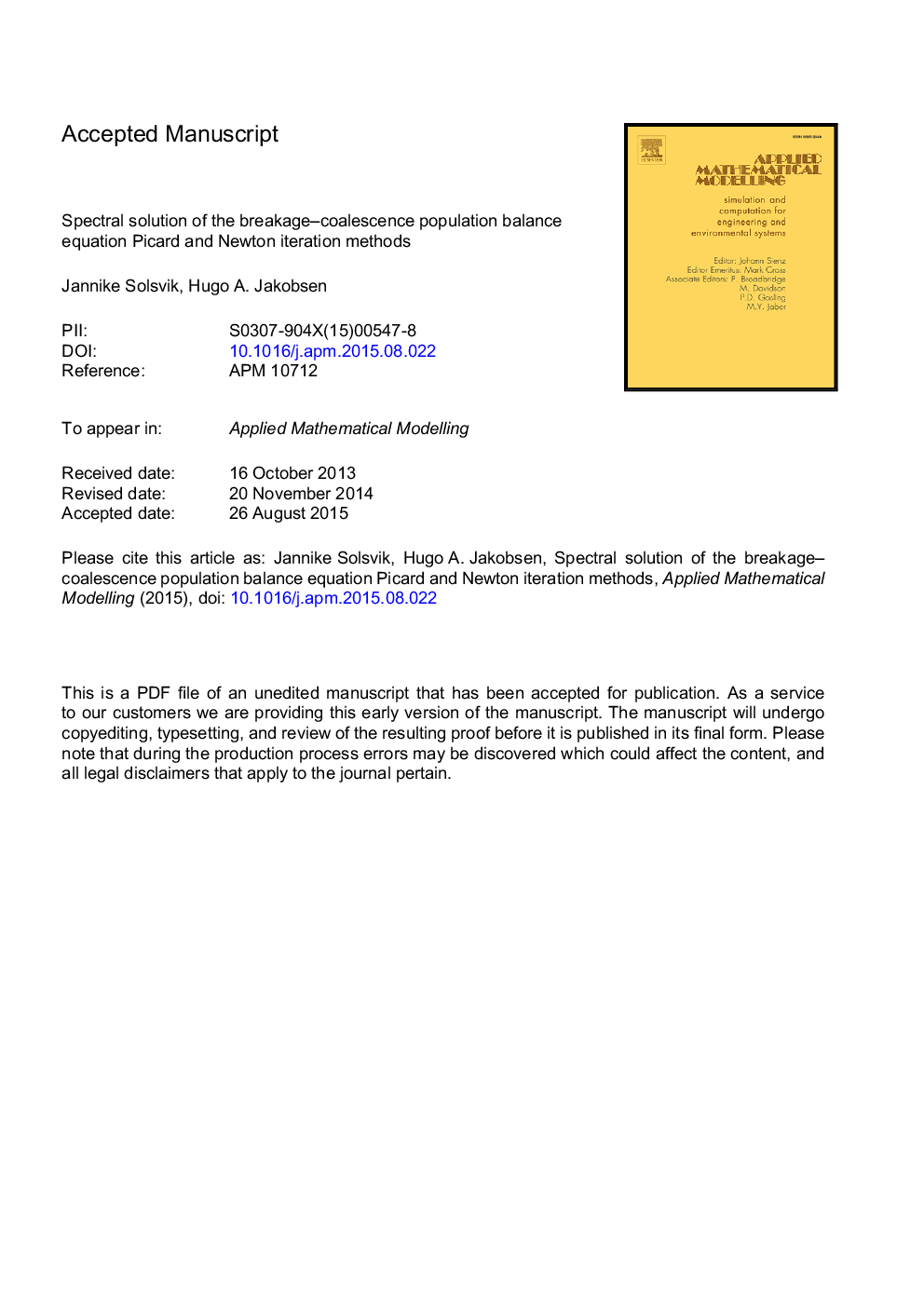| Article ID | Journal | Published Year | Pages | File Type |
|---|---|---|---|---|
| 10677581 | Applied Mathematical Modelling | 2016 | 20 Pages |
Abstract
The behavior of dispersed systems such as gas-liquids or liquid-liquid systems depends on the characteristics of the dispersed phase. The population balance (PB) equation is encountered in numerous engineering disciplines in order to describe complex processes where the accurate prediction of the dispersed phase plays a major role for the overall behavior of the system. In the present study, the orthogonal collocation, Galerkin and least-squares methods have been adopted to solve a non-linear PB equation which consists of both breakage and coalescence terms. The performance of the methods is demonstrated by comparing the numerical solution results with the (manufactured) analytical solution of the problem. For the least-squares method, the choice of linearization technique influences the numerical performance, whereas the Galerkin and orthogonal collocation methods obtain the same numerical accuracy for both the Picard and Newton iteration techniques. The least-squares method suffers from lack of convergency using the Picard method. On the other hand, if the Newton method is employed, the least-squares method obtains the same accuracy as the Galerkin and orthogonal collocation methods.
Related Topics
Physical Sciences and Engineering
Engineering
Computational Mechanics
Authors
Jannike Solsvik, Hugo A. Jakobsen,
